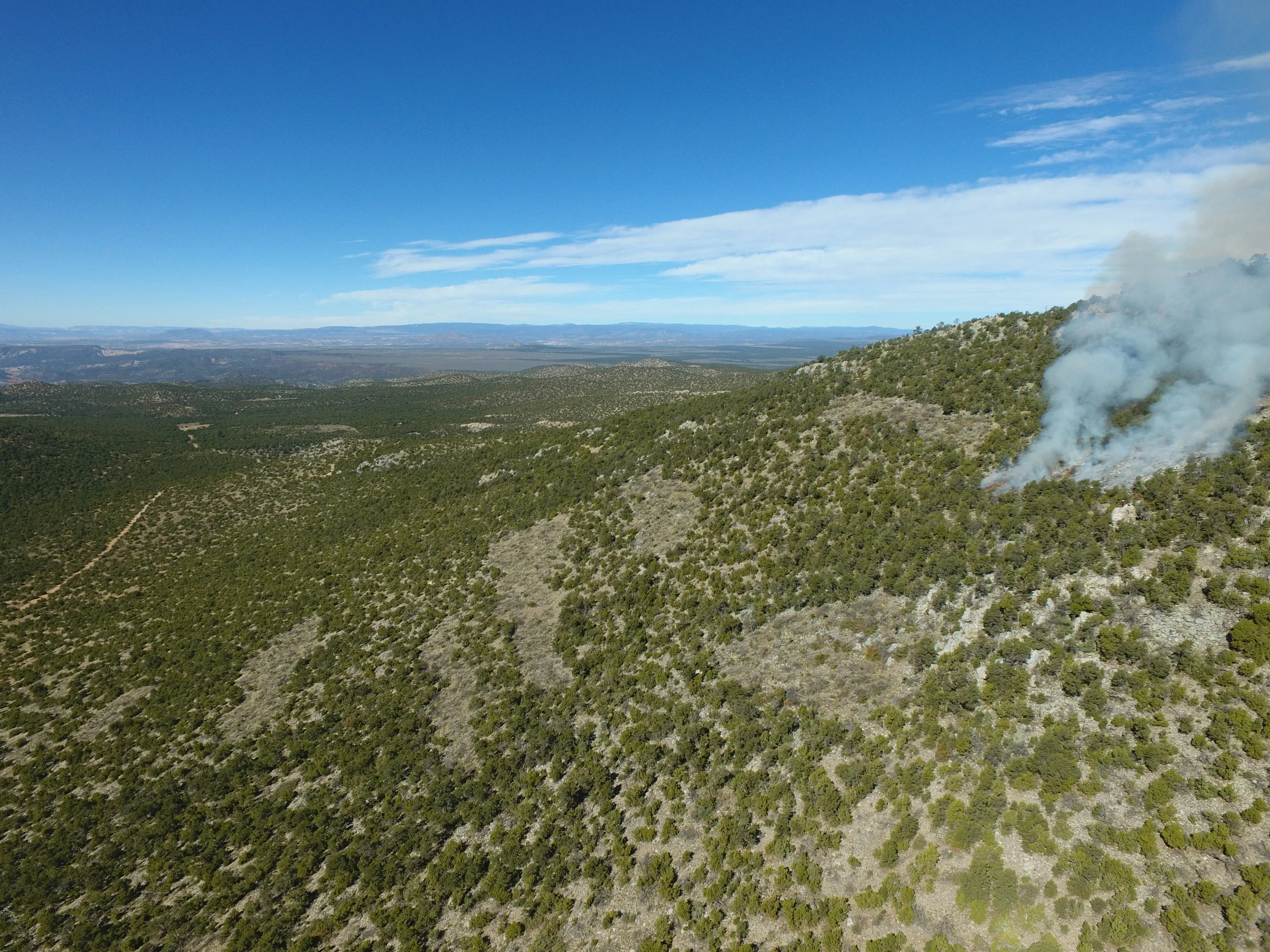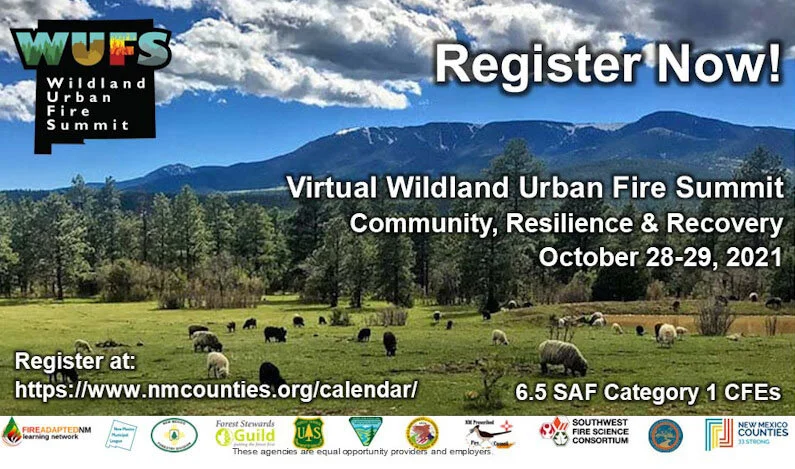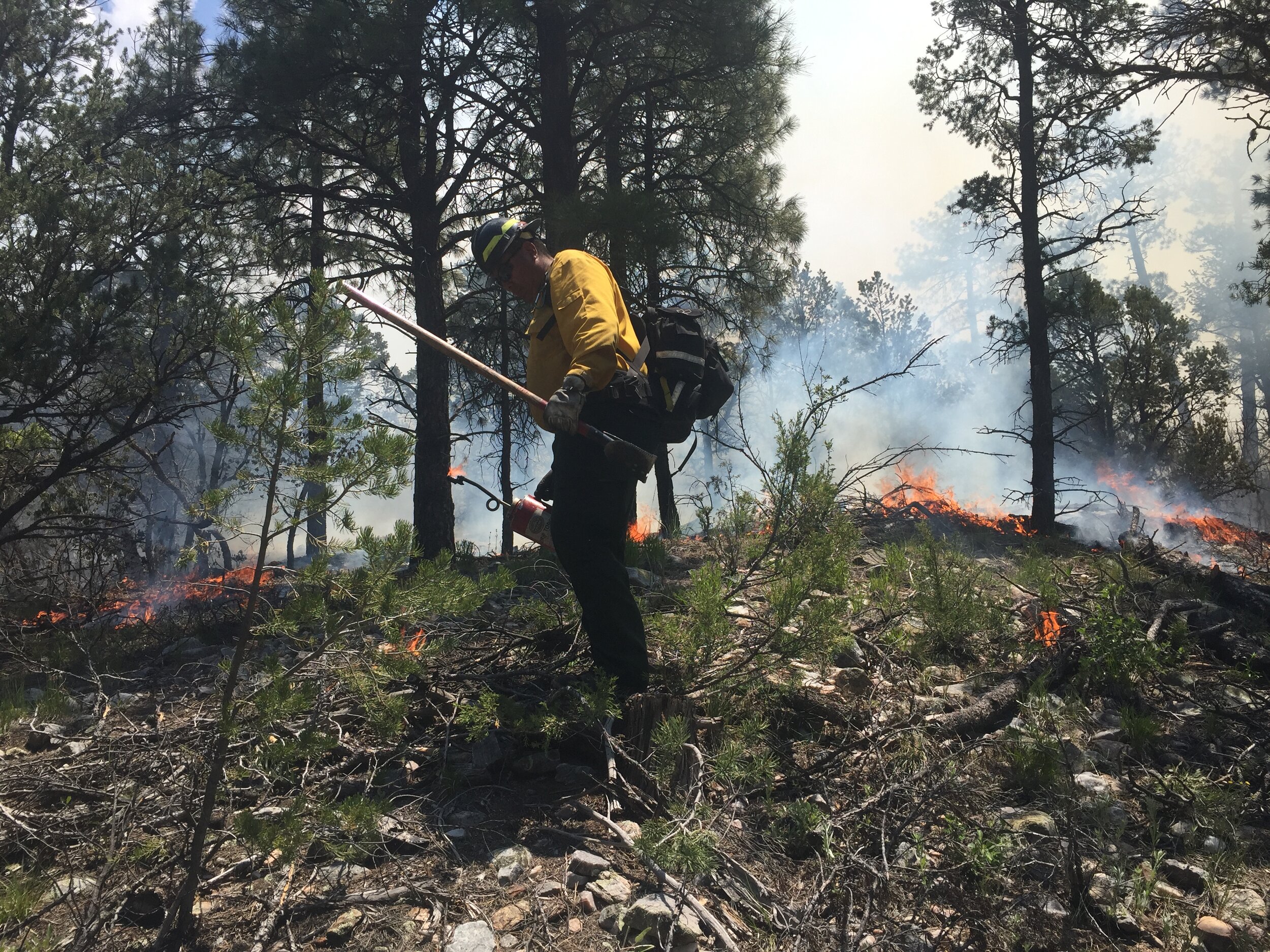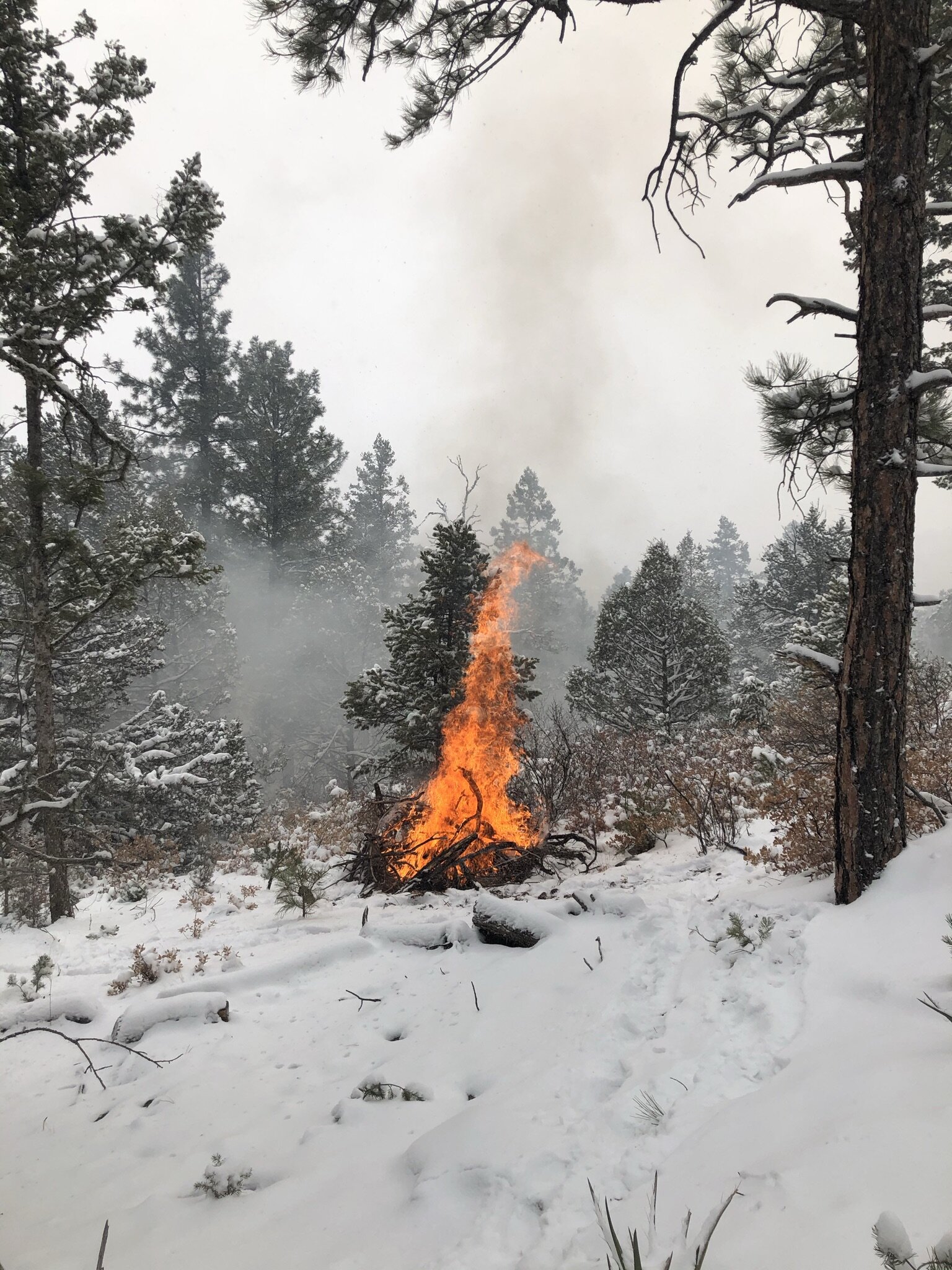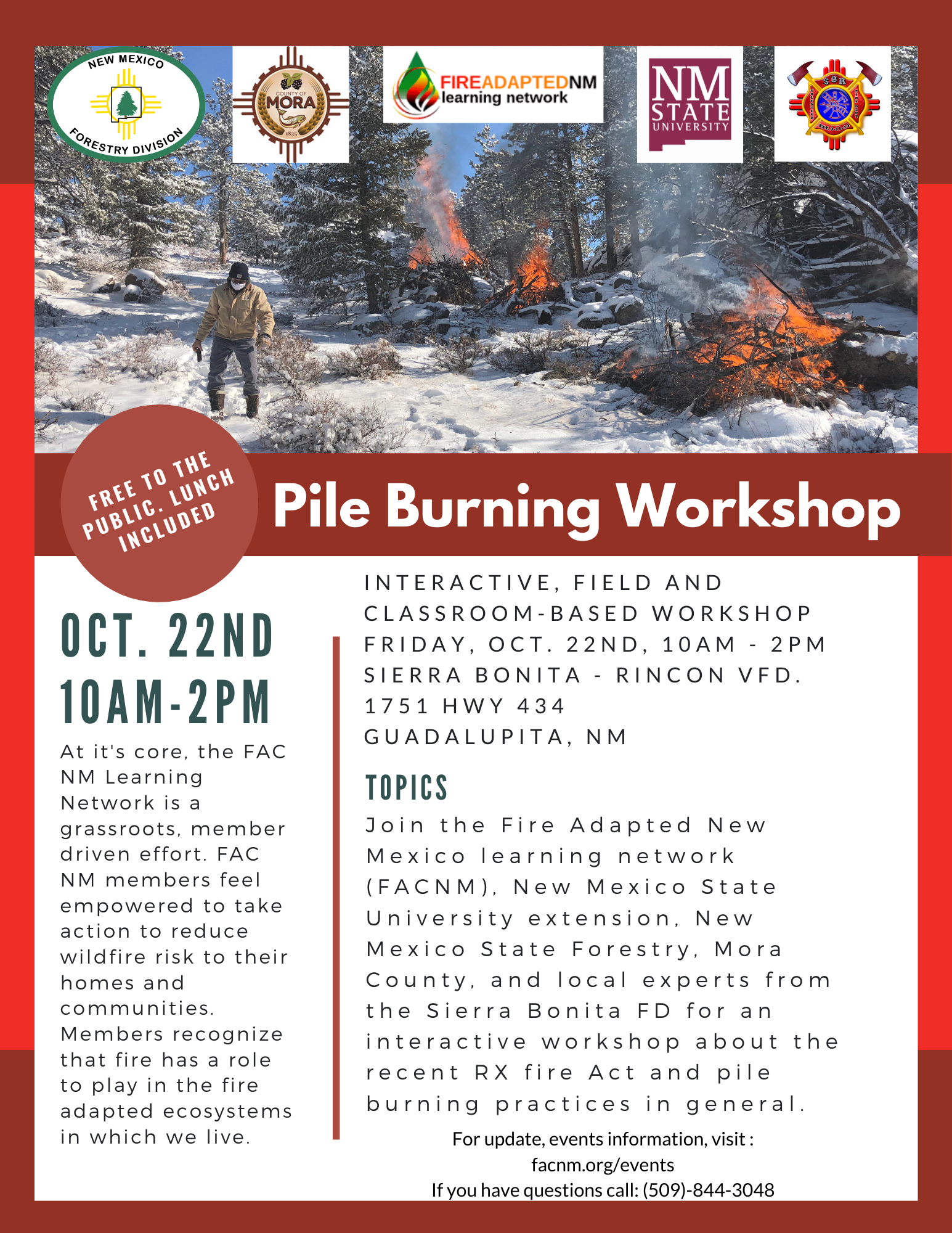We recognize the many wildfires which have ignited recently and are threatening homes and communities across the state. Our hearts go out to those who have been forced to evacuate, experienced destruction of property, or are otherwise impacted. Sign up for New Mexico State Forestry Division’s wildfire alert system here or visit NM Fire Info’s During a Wildfire webpage for more information and resources. Those who have been evacuated can find a Red Cross disaster shelter using this tool.
Hello and happy Wednesday, FACNM readers!
The blustery winds of spring are blowing in change both across the landscape and in the FACNM community. My name is Rachel and I work for the Forest Stewards Guild, a forestry nonprofit out of Santa Fe. I have contributed to this blog a few times in the past and will be helping out with the Wildfire Wednesdays project into the future. I look forward to getting to know this virtual community of curious and passionate folks!
Today we will be talking about talking - specifically, how to talk to kids about wildfire. Hotter drier days and those strong spring winds mean that wildfire season is here and smoke is on the horizon. Although wildfire is a natural phenomenon in the desert Southwest, it still poses a risk to our homes and communities and can be a pretty scary subject, especially for our youngest FACNM’ers.
This week’s Wildfire Wednesday features information on:
Teaching: how to talk about fire ecology - the science behind wildfire
Preparation: how to get your kids ready for wildfire
Coping: how to talk to kids about upsetting news and current events
Plus a wildfire graphic novel and coloring book for kids or the young at heart, upcoming FACNM events, and more!
Best regards,
Rachel
Teaching: breaking down fire ecology
What is fire?
Before we can talk about how fire spreads, we need to understand what fire is. We can feel its heat, smell its smoke, and see its light, but fire is actually not a solid, liquid, or gas. Rather, it is the result of a chemical reaction called combustion. Combustion is the process by which a substance called fuel reacts rapidly with oxygen and gives off heat. There are three components needed for ignition and combustion to occur. A fire requires fuel to burn, air to supply oxygen, and a heat source to bring the fuel up to ignition temperature. Heat, oxygen and fuel form the fire triangle. Fire’s heat is the result of super-excited molecules releasing energy in the form of heat as they break and reform their atomic bonds. Smoke is the result of organic material in the fuel being heated to the point that it converts from a solid to a gas. Light is the result of that released energy incandescing, or glowing, and giving off visible light waves at a very high temperature.
How does fire spread?
“After combustion occurs and a fire begins to burn, there are several factors that determine how the fire spreads. These three factors include fuel [what burns], weather [such as temperature and how dry the air is], and topography [the flatness (such as a grassland) or steepness (such as a mountain slope) of the ground]. Depending on these factors, a fire can quickly fizzle or turn into a raging blaze that scorches thousands of acres” (How Wildfires Work).
Fire ecology: the study of fire as a natural part of the ecosystem
Preparation: getting ready for wildfire
Preparing an evacuation kit
When a wildfire is spreading quickly and your family receives orders to evacuate, your safety is the top priority. This means you probably won’t have time to go through the house and decide what you want or need to take with you, you will just need to get moving. One key to readiness is “having an emergency supply kit ready to grab on the go, long before a wildfire or other disaster occurs. Keep it easily accessible so you can take it with you when you have to evacuate [and] plan to be away from your home for an extended period of time.” Follow the link to learn how to assemble your kit.
Making a family plan
Figure out before a disaster strikes how the whole family will react. Know how you’ll contact one another and reconnect if separated, establish a family meeting place that’s familiar and easy to find, consider the specific needs of your household, and practice ahead of time! Learn how to make a plan today.
Staying up-to-date on wildfires near you
Now that you’re prepared with an evacuation kit and a plan, you need to know where to find accurate information on a wildfire burning nearby.
The National Wildfire Coordinating Group (NWCG) maintains InciWeb, a website where official responding agencies such as the US Forest Service and NM Forestry Division can announce new wildfire ignitions and update wildfire incidents with location, containment status, acres burned, and evacuation notices. Search by incident name or find an incident on their national map (InciWeb).
New Mexico Fire Information (NM Fire Info) is an interagency effort by federal and state agencies to provide timely and accurate fire and restriction information for the entire state. The aim is to maintain one website where the best available information and links related to wildfire and restrictions can be accessed. Find updates on wildfires in the state, links to other helpful sites, and information on fire restrictions and smoke management (NM Fire Info).
Coping: how to talk about challenging subjects
“After disturbing incidents like… natural disasters, feelings of panic and fear increase. Extensive news coverage and posts on social media can heighten those feelings, especially in kids and teens. As adults grapple with how to move forward in the aftermath these events, it's important to help kids and teens process them, too.” Follow these General Guidelines for helping your kid(s) cope and find security in the face of upsetting current events.
During and following a wildfire, “routine is disrupted and one's sense of security is undermined. Families and communities should not underestimate the accumulative effects of evacuation, displacement, relocation, and rebuilding”. Talking to your child, providing them with facts and explanations of what fire is and why it happened, and allowing them time to process and ask questions can all help them cope with the stress and fear associated with living through a wildfire. Visit this link to learn how to help children impacted by wildfires.
Additional resources
Graphic novel: create an account on Dark Horse to access this open-source graphic novel. Follow along as Meghan and Alexx encounter a wildfire, experience what it is like to be evacuated, and talk about fire safety in Without Warning! Wildfire Safety Comic.
Coloring book: educational wildland fire coloring sheets, available for download from The Smokey Generation (Wildfire Coloring Sheets).
Upcoming Events
Join us as we celebrate National Wildfire Preparedness Day all through the month of May!
Upcoming webinars:
April 19, 12:00 - 1:00pm MDT
Collective Action for Wildfire Risk Reduction across Land Ownerships in the West (SWFSC)May 4, 6:00 - 7:00pm MDT
Home Hazard Risk Assessments - Community-based Wildfire Risk ReductionMay 5, 10:00 - 11:30am MDT
Too Much, Too Little or Just Right? Forest regen in fire-adapted landscapes (SWERI/USDA)May 18, 6:00 - 7:00pm MDT
Potential Operational Delineations (PODs) - Pre-planning for fire operations and response\
Research Survey:
Barriers to Biochar Production
There is little research directly considering barriers to individual- and community-scale biochar production, and the region’s socioecological context may present unique barriers to adoption different from those reported elsewhere. Click here to fill out the survey and support this research that will promote biochar.
